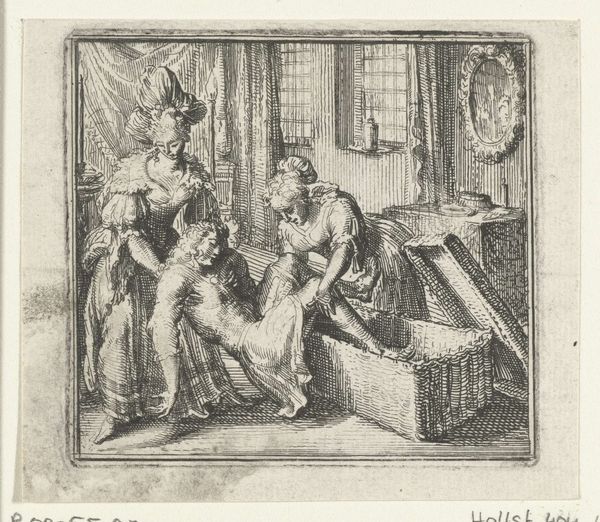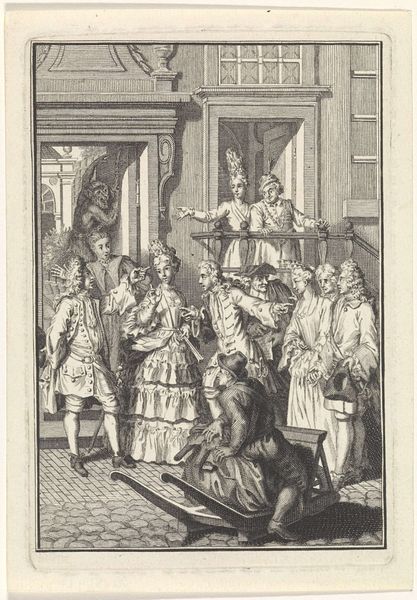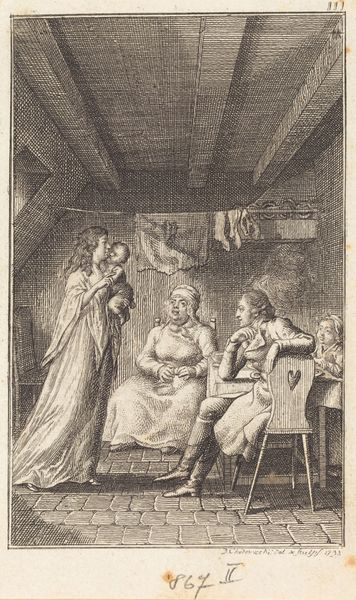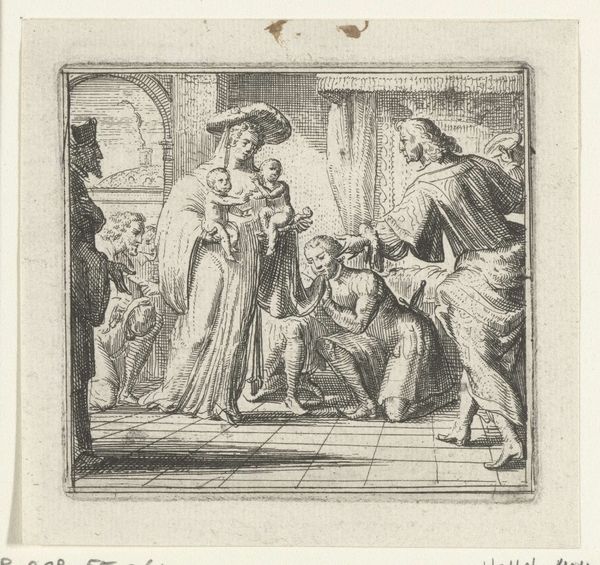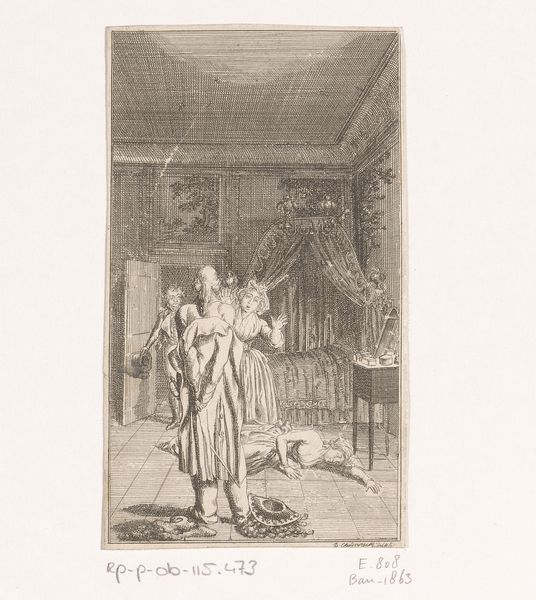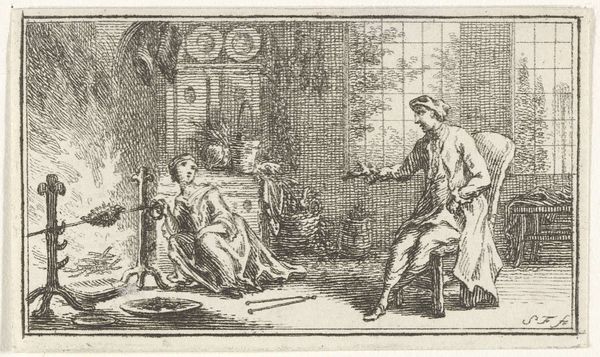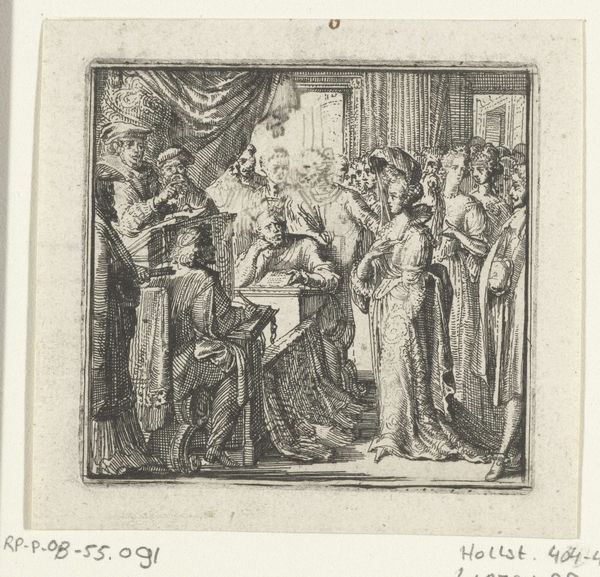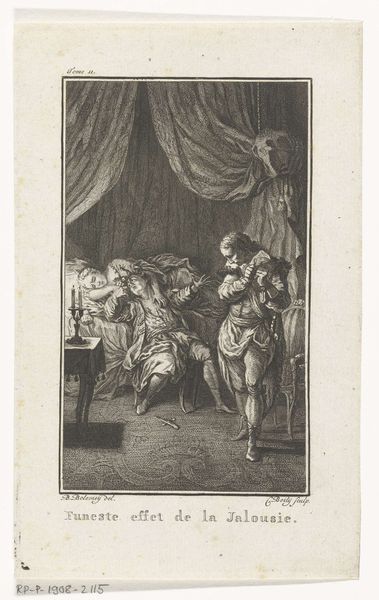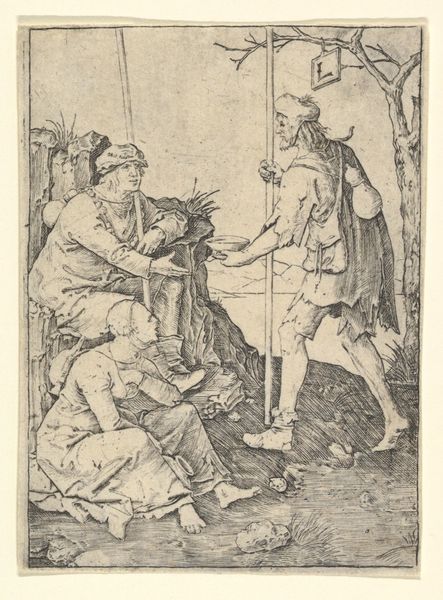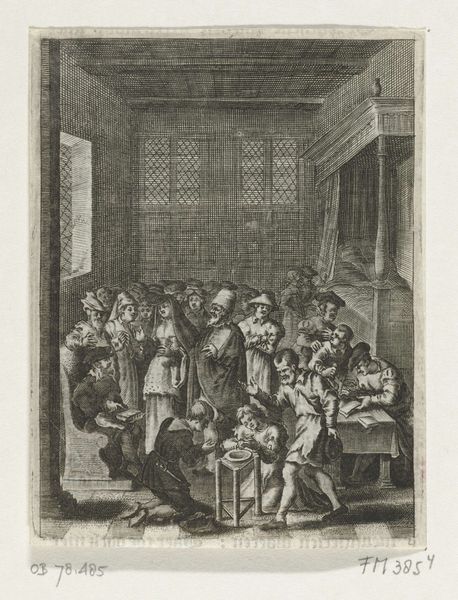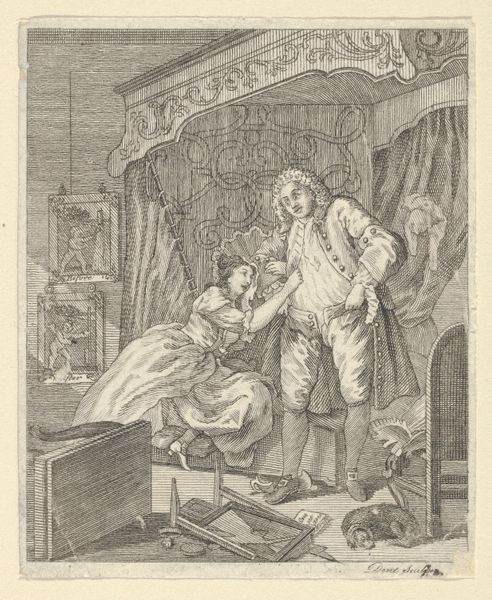
print, engraving
#
dutch-golden-age
# print
#
figuration
#
line
#
history-painting
#
engraving
Dimensions: height 69 mm, width 78 mm
Copyright: Rijks Museum: Open Domain
This illustration for Boccaccio's Decameron was created by Romeyn de Hooghe in the late 17th or early 18th century, using the intaglio printmaking technique of etching. Here, a metal plate, likely copper, would have been coated with a waxy ground, and then the artist scratched an image into this ground with a needle, exposing the metal beneath. The plate was then immersed in acid, which bit into the exposed lines. This process allowed for incredibly fine details, like the textures of the drapery, the characters' expressions, and even the ornate architectural elements of the room. After the acid bath, the plate was inked, the surface wiped clean, and then pressed onto paper, transferring the ink from the etched lines to create the print you see. The etcher's skill is evident in the way he captured light and shadow, creating depth and volume with just a few precisely placed lines. The labor-intensive process of etching, with its reliance on both technical skill and artistic vision, elevates this illustration beyond mere reproduction. It is a testament to the value placed on craftsmanship in de Hooghe's time, and a reminder that even seemingly simple images can be the result of complex and time-consuming processes.
Comments
No comments
Be the first to comment and join the conversation on the ultimate creative platform.
